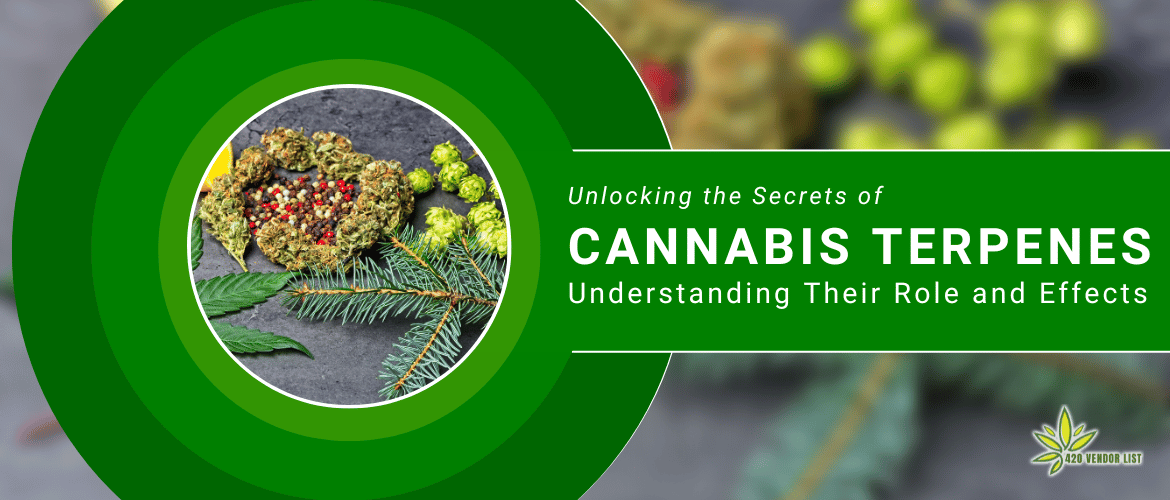
Cannabis, also known as marijuana or hemp, is a plant with a rich history and a wide range of uses. From medicinal to recreational, the cannabis plant has been used for centuries to improve various aspects of human life. However, it wasn’t until recently that scientists and researchers began to fully understand the intricacies of the plant. One of the most fascinating aspects of cannabis is the presence of terpenes, a class of organic compounds that play a crucial role in the plant’s aroma, flavor, and effects.
Terpenes are a class of organic compounds that are found in many plants, including cannabis. They are responsible for the distinctive aromas and flavors that are associated with different types of cannabis. Terpenes are produced in the trichomes of the cannabis plant, which are small, hair-like structures that cover the leaves, buds, and flowers of the plant.
Terpenes play a crucial role in the cannabis plant in several ways. They are responsible for the plant’s unique aroma and flavor, which can vary depending on the type of cannabis. Terpenes also play a role in the plant’s effects. They interact with the body’s endocannabinoid system and can produce a wide range of effects, from relaxing to energizing. In addition, terpenes have medicinal properties and can be used to treat specific ailments.
What are Terpenes?
Terpenes are a class of organic compounds that are produced in the trichomes of the cannabis plant. They are responsible for the plant’s aroma, flavor, and effects. Terpenes are composed of carbon and hydrogen atoms, and they vary in their chemical structure. They are classified based on their chemical structure and the number of repeating units.
Types of terpenes found in cannabis
There are over 100 different terpenes found in cannabis, each with its unique aroma and flavor profile. Some of the most common terpenes found in cannabis include myrcene, limonene, linalool, and caryophyllene. Myrcene, for example, is known for its musky and earthy aroma, while limonene is known for its citrusy aroma.
How terpenes affect the aroma and flavor of cannabis
Terpenes play a crucial role in the aroma and flavor of cannabis. They are responsible for the unique aroma and flavor that are associated with different types of cannabis. For example, a strain of cannabis with a high concentration of myrcene will have a musky and earthy aroma. In contrast, a strain with a high concentration of limonene will have a citrusy aroma. The aroma and flavor of cannabis can also change depending on how it is grown, processed, and stored.
Understanding the Role of Terpenes
The entourage effect
The entourage effect is the theory that the different compounds found in cannabis, including terpenes, work together to produce a range of effects. The theory suggests that the different compounds in cannabis interact with each other and with the body’s endocannabinoid system to produce a wide range of effects.
The synergy between terpenes and cannabinoids
Terpenes and cannabinoids are the two main classes of compounds found in cannabis. They work together in synergy to produce a wide range of effects. For example, the combination of CBD and terpenes can produce a relaxing effect, while the combination of THC and terpenes can produce an energizing effect. The synergy between terpenes and cannabinoids is thought to be responsible for the wide range of effects that cannabis can have.
How terpenes interact with the body’s endocannabinoid system
The body’s endocannabinoid system is a system of receptors that are located throughout the body. These receptors are responsible for maintaining homeostasis, or balance, in the body. Terpenes interact with the body’s endocannabinoid system by binding to these receptors. This binding produces a wide range of effects, depending on the type of terpene and the type of receptor that it binds to.
Effects of Terpenes
Different effects of specific terpenes
Terpenes produce a wide range of effects, depending on the type of terpene and the concentration of the terpene in the cannabis plant. For example, myrcene is known for its relaxing and sedative effects, while limonene is known for its energizing and uplifting effects. Linalool is known for its relaxing and calming effects, while caryophyllene is known for its anti-inflammatory and pain-relieving effects.
You Might Also Like: [ Cannabis Tinctures 101: Understanding, Making and Using Them ]
How terpenes can be used for specific ailments
Terpenes have medicinal properties and can be used to treat specific ailments. For example, myrcene is known for its sedative effects and can be used to treat insomnia, while limonene is known for its anti-anxiety effects and can be used to treat anxiety disorders. Linalool is known for its relaxing and calming effects and can be used to treat stress and anxiety, while caryophyllene is known for its anti-inflammatory and pain-relieving effects and can be used to treat arthritis and other inflammatory conditions.
Combining terpenes for desired effects
Terpenes can be combined to produce desired effects. For example, a combination of myrcene and limonene can produce a relaxing and uplifting effect, while a combination of linalool and caryophyllene can produce a relaxing and pain-relieving effect. It is important to note that the effects of terpenes can vary depending on the concentration and combination of terpenes in the cannabis plant.
Conclusion
Terpenes are a class of organic compounds that are found in the cannabis plant. They are responsible for the plant’s aroma, flavor, and effects. Terpenes interact with the body’s endocannabinoid system and can produce a wide range of effects, from relaxing to energizing. Terpenes also have medicinal properties and can be used to treat specific ailments.
There is still much to learn about terpenes and their effects on the human body. Future research will focus on understanding the specific effects of different terpenes, as well as how they interact with the body’s endocannabinoid system.
Understanding the role of terpenes in cannabis is important for cannabis consumers. Knowing the specific effects of different terpenes can help consumers make informed decisions about which strains of cannabis to use for specific purposes. Furthermore, understanding the role of terpenes in the entourage effect can help consumers achieve the desired outcomes and enhance the overall cannabis experience.


